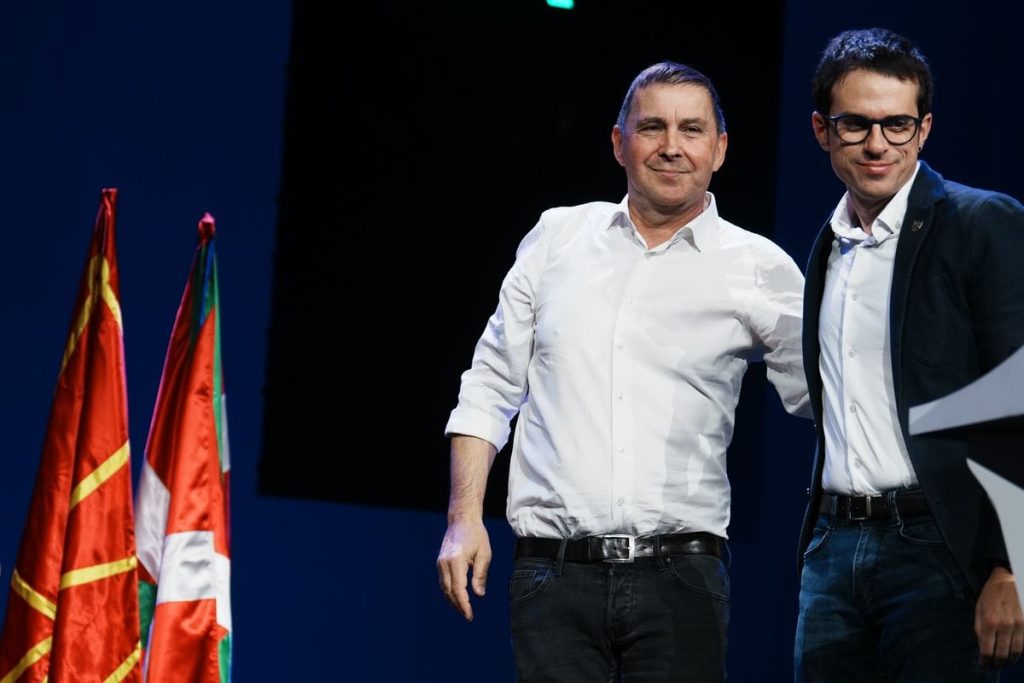In the small town of Otxandio, a municipality of 1,300 inhabitants governed by EH Bildu in the heart of Bizkaia, there is a square with a fronton, a 16th-century church, a baroque town hall with the coat of arms of Castilla on the facade, and two sanctuaries separated by a handful of meters. The first one, in Plaza Andikona, bears the names of the 64 residents, including several children, who were victims of the world’s first bombing on a civilian population. This bombing took place four days after Franco’s coup on July 22, 1936. The second ‘sanctuary’, behind the town hall, is a tribute to ETA and includes a mural with the map of the Basque Country and photos of 225 men and women “prisoners or fugitives”.
Pello Otxandiano, born 40 years ago in this quiet town at the foot of Urkiola, is the new candidate of the EH Bildu coalition for regional elections expected to be held in the spring of 2024. Otxandiano, an engineer with a doctorate specializing in telecommunications, entered politics in 2011 when his party won with a majority in Otxandio. His party, EH Bildu, has become a key player at all levels of government and has experienced a surge in popularity, with Otxandiano being positioned as a new leader for the party.
EH Bildu has been described as a practical party that has been successful in understanding and adapting to the post-ETA era in the Basque Country. The party has increased its social base by attracting not only nationalist voters but also left-wing supporters. By focusing on left-wing causes such as feminism, environmentalism, and public services, EH Bildu has managed to appeal to a broader voter base. Otxandiano’s leadership represents a new generation within the party that aims to provide updated answers to old questions.
EH Bildu’s expansion from municipal to regional and national levels has been significant, with the party playing a key role in government stability in Madrid and making gains in cities like Pamplona. Despite its success, EH Bildu continues to grapple with its radical origins and its ties to ETA. The party’s ability to navigate these tensions and present a more moderate image has been crucial to its electoral success. Otxandiano’s leadership marks a new chapter for EH Bildu as it seeks to balance its past with a more pragmatic approach to politics.
The town of Otxandio is a microcosm of the changes within EH Bildu, with reminders of both its violent past and its present political aspirations. As Otxandiano embarks on his new role as a leader of the left-wing movement in the Basque Country, he faces the challenge of maintaining the party’s support while addressing the tensions within the coalition. EH Bildu’s success will depend on its ability to continue appealing to a broad base of voters while navigating the complexities of Basque politics in a post-ETA landscape.















